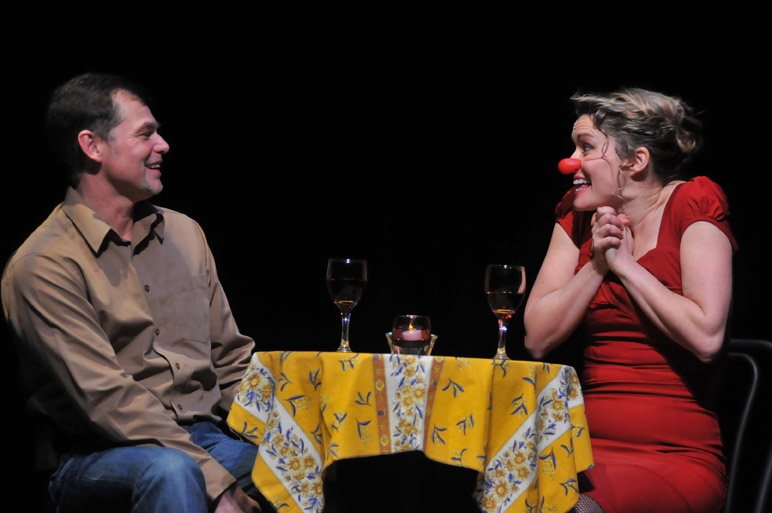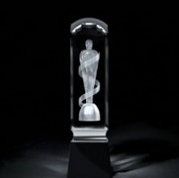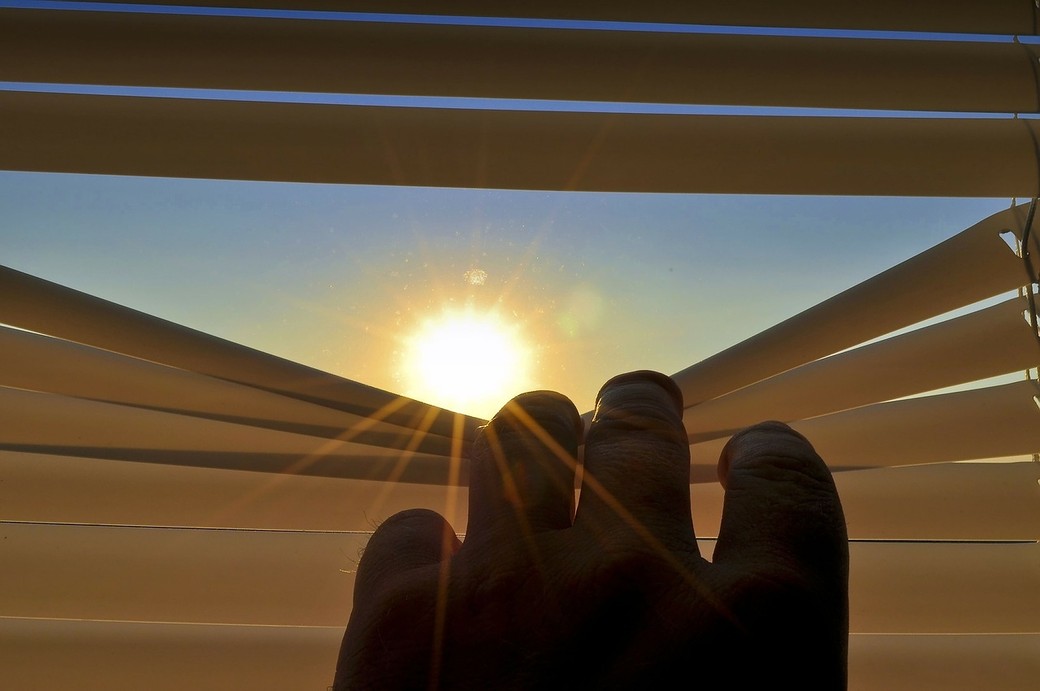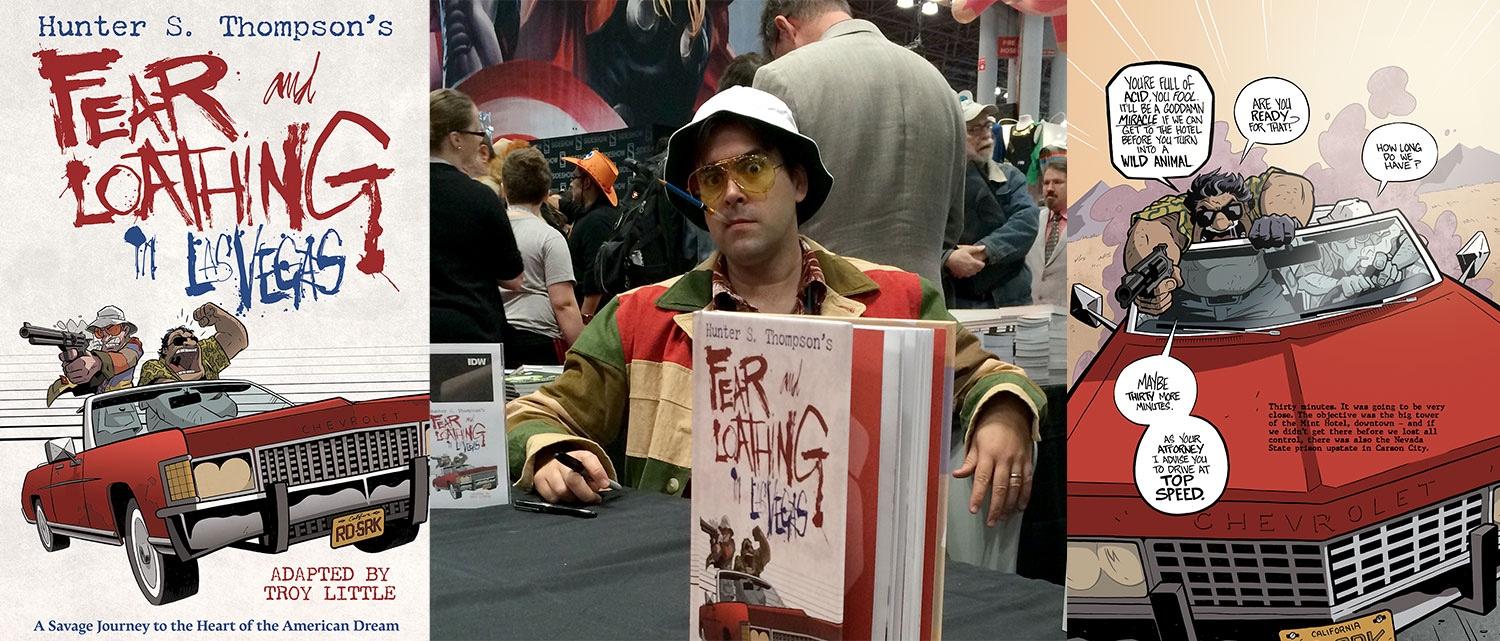
Fear and Loathing With Troy Little
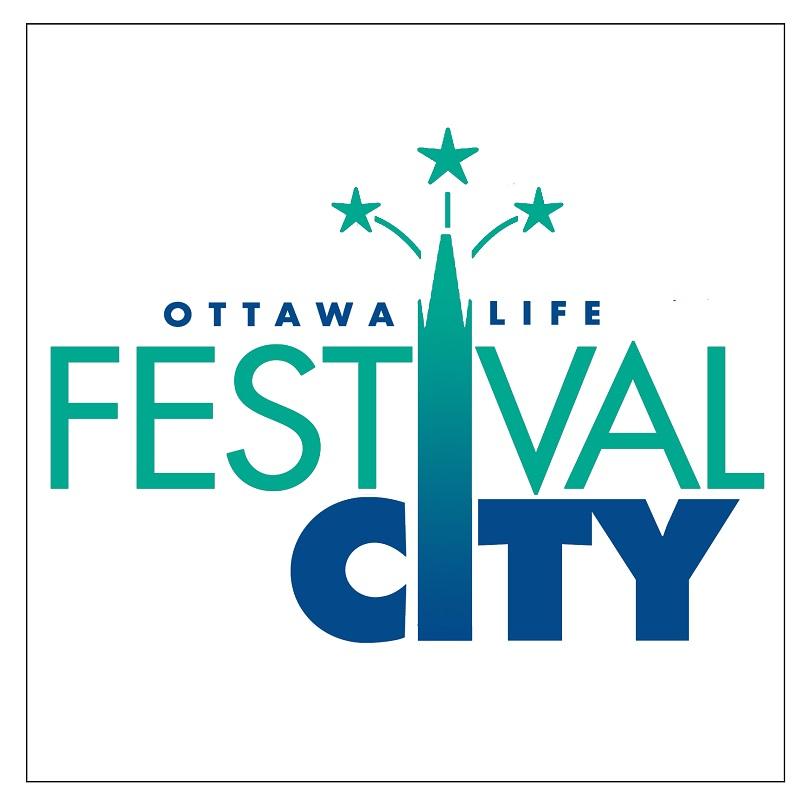 Ottawa Life’s Festival City Series is back! We'll provide a unique look at some of your favourite events.
Ottawa Life’s Festival City Series is back! We'll provide a unique look at some of your favourite events.
We’ll go beyond the music with artist interviews, volunteer profiles, concert reviews and spotlights on
the tastes, sights and sounds of the festival season.
Your city! Your festivals!
Like a good sunscreen, Ottawa Life has you covered.
Photos by Andre Gagne and courtesy of Troy Little and Meanwhile Studios
He was somewhere around Charlottetown on the edge of an island when the news began to take hold.
He remembers thinking something like “Yes!” and “Oh God, no! I’ll screw it up” but “Yes!” and suddenly there was a great roar and his head was full of what felt like huge bats, all swooping and screeching as the realization of what he had been offered started to materialize out of the haze. Suddenly there was a voice (his voice!) screaming:
“Whose idea was it to get the Powerpuff Girls guy to adapt Fear and Loathing in Las Vegas?”
The Powerpuff Girls guy is three-time Eisner nominee Troy Little and even though it’s now nearly three years after he started work on turning one of the most iconic cult texts ever into a graphic novel the whole experience is still pretty surreal, as though he’s trapped in some chemical laced cloud hovering over the Circus Circus casino. Somewhere Hunter S. Thompson is swigging back a bottle and chuckling.
“I was totally intimidated to do it,” says Little remembering agonizing over the choice to send out some test drawings for the project. “I didn’t want to screw it up and thought I couldn’t do it justice. I’d never be happy, I figured, with what I’d give them but I had to give them something. I sent it in and spent the night cursing myself for screwing up so badly. Two days later they said I had the job.”
After completing the adaptation Little set out on a book tour in the guise of the infamous Gonzo journalist even visiting some of the now landmark settings in Thompson’s novel. What happens in Vegas doesn’t always stay in Vegas!
How did a self-published comic book artist land a gig rebooting a beloved 90s cartoon? How did said cartoon about three girls named Blossom, Bubbles and Buttercup lead to a Canadian being tasked with trying to put Thompson’s wild, drug fueled romp through the American Dream into comic form? And just what was in his suitcase when an artist from Prince Edward Island and a rented red convertible hit the Las Vegas strip?
Read on!

Ottawa Life: We all have different memories about how comics came into our life or those mornings in front of Saturday cartoons. What do you feel were some of the early things that influenced your artistic ability?
Troy Little: I’m pretty typical in that I grew up in the 80’s interested in little beyond cartoons, comics, Star Wars and Indiana Jones. Honestly, not much has changed in the intervening years.
My father was a major influence on me actually becoming an artist. He was an extremely talented craftsman and mechanic. He worked in the Air Force until he retired and then became a wood worker making furniture and wonderful toys.
As a kid I would sit and stupidly grin watching him doodle funny characters in the margins of the TV Guide. I couldn’t connect with him over sports or any typical Father & Son stuff but he liked my drawings and always gave me constructive critiques on how to improve. Growing up my goal was to impress him with my drawings. When I told him I wanted to go to art school after high school his only comment was, “You know there’s no pension in it.”. Spoken like a military man! Despite that, both my parents were unimaginably supportive, I can’t thank them enough.
When did you start to realize that drawing was becoming something you wanted to pursue more passionately then, say, just doodles in your school notebooks?
There wasn’t much of a debate about it really. Around Grade 12 they told me I needed to figure out what I was going to do after graduating and it was more or less a shrug. “Art school, I guess?”. I wasn’t really interested or qualified for much else, so it seemed the thing to do by default.
You went on to attend school at Sheridan here in Ontario. What are some of the things you feel you most learned from you time there?
I took the 3-year Interpretive Illustration course there with the idea that I’d continue on and follow it up with the Animation course. I never did, but I ended up working in animation in Ottawa for many years, just learning on the job.
Being from Prince Edward Island there wasn’t a lot of kids I grew up with who would draw, so I got a bit of an fat head being told how great I was. Going to Ontario at 18 and being surrounded by REALLY talented people who were there to learn and not try and show off finally caught up with me. I realized I had the entirely wrong approach. It was an eye opener and all of a sudden I felt miles behind everyone. I’ve been playing catch up ever since.
You have a lot of different styles. How do you approach your art when it comes to working in all these design elements?
That’s probably a hangover from working in animation where you have to be very adaptable to different styles. I guess I try and tailor the look of different projects to fit the tone or narrative I’m trying to convey. It can be frustrating on licensed titles because I can copy the models pretty close but then I’m not really bringing my own voice to those books in the same way I do my creator-owned books. It’s hard to gauge what your “style” is and how is it identifiable when you’re all over the map like me.
With so many works being done on computers these days, how important is it for you to maintain that hand drawn quality to your work?
It’s very important to me, it’s the whole reason I do comics! Sure, I could work faster and all that but to me that’s just the death of fun. Pencils, ink and the tactile feel of carving these images out on paper is something I don’t want to give up. That said, the computer is still used in scanning and colouring the artwork and everything is delivered digitally. It’s just a tool, but for the most part I like to kick it old school.
In 2000 you began self-publishing your own comic series, something that has become much more popular for artists since. How did you find managing this back then and what was your process when it came to getting your Chiaroscuro series out there?
I was a few years behind the self-publishing boom that made Teenage Mutant Ninja Turtles and Bone such major success stories, but like most self-publishers it sounds like a dream job. I learned a lot from Canadian self-publishing legend Dave Sim who’s book Cerebus ran 300 issues for 26 years monthly. He spoke a lot about how to print books, work with distributors and the business end of things. I emulated his path almost a decade after that sort of thing was viable but it did get me started! I still think of self-publishing down the road, but it’s an expensive gamble that few win at.
 Nearly a decade later you came out with Angora Napkin. Did you approach your second book much differently then the first?
Nearly a decade later you came out with Angora Napkin. Did you approach your second book much differently then the first?
My first series was heavily influence by Cerebus; lots of detailed cross-hatching to build up tone and mood. After working in that for 5 years I took a break (never to return, it seems) to play with some loose, cartoony comics based on an animated series my buddy Nick Cross and I were trying to pitch.
It was a lot more fun! I really enjoyed letting go and getting crazy with those Angora Napkin characters. Having made contact with IDW Publishing on collecting the self-published Chiaroscuro issues into a book I pitched them the Angora Napkin project I had underway and they took that on as well. So ended my self-publishing career, as IDW and Top Shelf have been a very good home for me for quite some time now.
That book and it's sequel received Eisner noms and some acclaim for it being geared to a teen market. Was that something you are consistent about when you set to working on the story? Did you have any specific goal in mind when it came to this work?
It’s pretty self-indulgent. My hope was that if I was laughing at it then maybe there’s other weirdo’s out there who would share my oddball sense of humour as well. I kind of imagine it’s eternally locked in that fringe of pop culture where the cult comics and movies live, and it sort of belongs there I think.
From there, Teletoon went on to make an animated pilot. What was your experience working with the Network on that?
Surprisingly great! I had my reservations but it was geared for a late night audience and they pretty much let us have free reign, which really surprised me. Too many years working on kids shows I guess, so when we got an email asking us if we could “Up the sex and violence?” I knew this was a once in a lifetime opportunity and we went nuts. It was a great experience and I’m really proud of how it turned out despite our limitations.
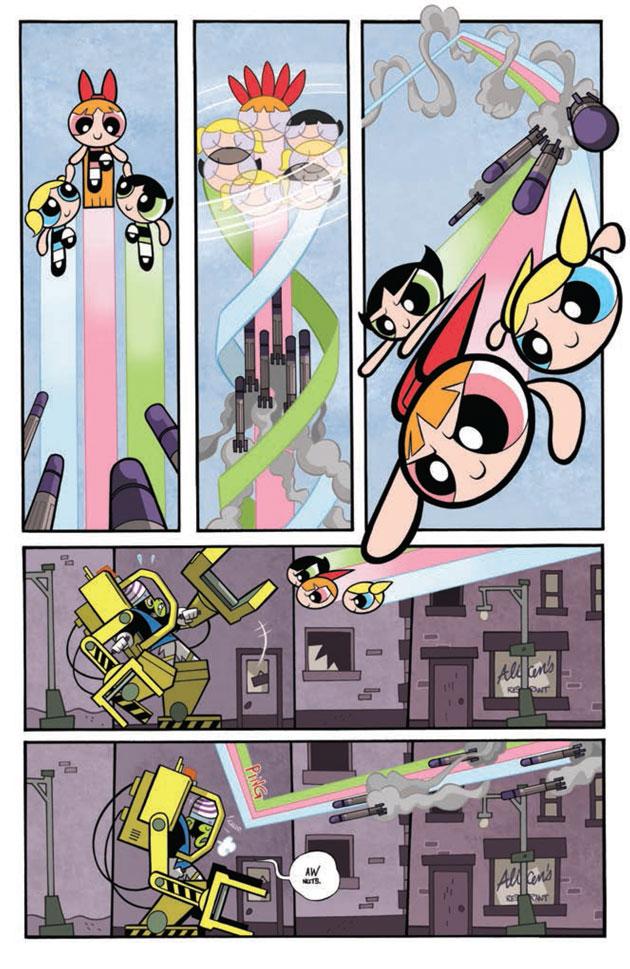 How did you get involved in the re-launch of the Powerpuff Girls?
How did you get involved in the re-launch of the Powerpuff Girls?
I was back doing storyboards for kids shows and one particular show I was on pushed me to the breaking point. I politely quit and sent and email to IDW asking if they had ANYTHING they though I could fit in on.
It just so happened they were discussing who to put on the new Powerpuff Girls series they were about to launch and offered me the job. An amazing case of being in the right place at the right time (and also I love The Powerpuff Girls)! That they trusted me to both write and draw the initial series was a dream come true!
Buttercup, Blossom and Bubbles were pretty beloved characters before you came into the picture. How did you go about utilzing the already established universe and characters while still allowing elements of your own slant on the reboot?
The show had been off the air for over a decade and the re-boot wasn’t even being talked about at the time. I wanted to bring back as many of the old characters as I could fit in. It was my first time writing a story that required approval beyond myself so that was a good learning experience. I kept close to the classic style, kept the pace and action rolling and tried to capture the feel of the show in comic form while playing out an epic storyline like a serialized film.
The response was overwhelmingly positive I was relieved to find. It hit the mark with the old fans and hopefully brought in some new ones as well. They are SO much fun to write and draw.

Next comes arguably your biggest project to date: Fear and Loathing in Las Vegas.
Yeah. I had just submitted some pages (for Powerpuff Girls) and was just waiting for a response from my editor. And, basically as a byline at the bottom, was: would you be interested in picturing for Fear and Loathing in Las Vegas. Out of the blue I was, like, what, why me? I’m the Powerpuff Girls guy.
So, seriously, what went through your mind when you finally landed it?
I spent a long time avoiding doing a pitch; I felt I would never do it justice. My editor finally cornered me, gave me a deadline to deliver SOMETHING, so I did and knew that I blew it. I was miserable. To my shock, 2 days later I got the job and had to abandon the Powerpuff Girls for a madman with a suitcase full of drugs. Why not?
Were you involved in any conversations with Hunter S. Thompson's estate?
No, I was kept out of all that but I do imagine that would have been really interesting. My job was to try like hell to stay true to the spirit of the novel. Make a companion piece that fits well along side the novel and the film and not screw it up or I’ll be lynched by his rabid fans. Lucky for me I won most of the skeptics over in the end. Whew.
 Did any of Ralph Steadman's art factor into what you were crafting knowing how iconic his work was already tied to the book?
Did any of Ralph Steadman's art factor into what you were crafting knowing how iconic his work was already tied to the book?
We decided for the get-go not to try and emulate his work in any way. I’d just do a horrible job, plus I love his work and wouldn’t dare try and riff on that at all. I took a few homages from his drawings and included them in the book in different spots. Those with a keen eye will even spot a cameo by Ralph himself in one panel!
Knowing Thompson to be a character in his own right, how did you try capture the offbeat lunacy of the text in your drawings and art?
I find that book to be really funny and it has a manic energy to it that I wanted to capture. It seemed natural to take an exaggerated, cartoonish approach to the characters. That way I could play with all the extreme madness from the book and tell it with visuals that I hoped would compliment the text.
What is your favorite story you can share that is connected to this project?
I casually suggest to the publisher that they fly me down to LA, rent me a red convertible and we kick off a book tour starting at the Beverly Hill Polo Lounge and then race across the desert to Vegas and hit all the spots from the novel along the way doing book signings as we went.
And that happened!!! It was madness, the total trip of a lifetime. I kept a Gonzo style comic journal as we went documenting what was happening as quickly as I could. Following in the footsteps of Hunter Thompson with a suitcase full of art supplies instead of narcotics.

You married another artist, Brenda Hickey. How have you found the similar careers to have worked into your marriage? Do you both comment on each others work,share ideas, etc.?
Brenda is amazing. I don’t think there’s two people more suited for each other. She’s talented beyond her ability to accept, she’s got a ridiculous sense of humor that I totally appreciate and she’s a wonderful Mother to our kids.
We work in our shared studio day in and day out. We both understand that this job requires long hours, lost weekends, stressful deadlines and infrequent paychecks. We crank music, ignore each other with headphones on, chat and compline the workday away or pack it up and go draw at a coffee shop.
We’re pretty independent workers, we have our own ideas we want to work on in our “spare time” (ha ha ha) so collaborating hasn’t really been a thing (yet?).
Finally, as a guest at this years Ottawa Comic Con, what are these Con experiences like for you from the artists perspective?
I really enjoy doing conventions. I love to travel so it’s been a great excuse to get out and see a bit of the world, making friends and fans along the way. I’ve not been to the Ottawa Comic Con before but I hear it’s a great show. Having lived in Ottawa for many years I have a lot of friends I hope to see there as well! I’m super looking forward to the event – it’s going to be great!!
Catch Troy this weekend at Ottawa Comiccon's Artist Alley Table 2315

